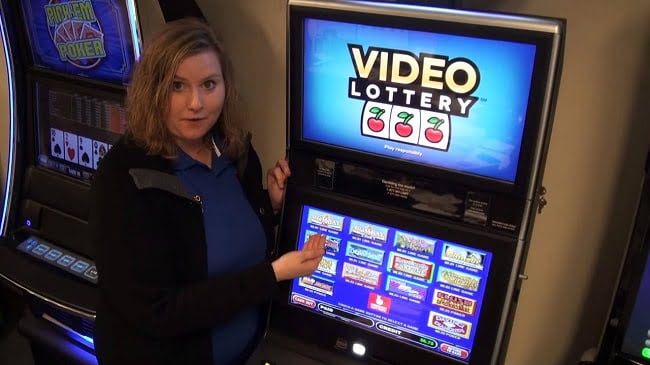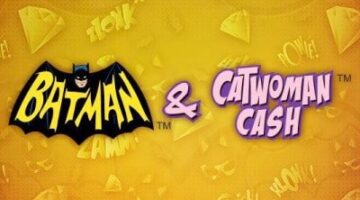VLT Addiction – Video Lottery Terminal Addiction

Why Video Lottery Terminals Are So Addictive VLT
Called the crack cocaine of gambling for good reason, video lottery terminals (VLTs) seem uniquely addictive – and VLT addiction happens fast.
While gamblers betting on sports, horses, or on perceived games of skill (such as poker) may take decades to progress to pathological gambling; VLT players can make this tragic journey in under a year.
Completely unregulated in most states, no one was prepared for the social devastation unleashed by the proliferation of VLT gaming. Countless stories of tragedy, financial ruin and suicide linked to VLT have made their very existence controversial, yet they remain widely available for play in many jurisdictions.
Why Are VLTs So Addictive?
Escape Gambling
VLT gamers play for an analgesic escape. They play to forget about problems, anxieties or any other negative emotions – They play VLT’s in the same way an alcoholic drinks to forget. By contrast, action gamblers (those who play games such as poker or bet on sports) chase the thrill and excitement of the wager.
This seeking of escape through gaming induces an almost narcotic and trance-like state, and this hypnotic and narcotic trance is very addictive to the escape gambler.
More women than men gamble to escape, and all escape gamblers play fairly mindless and repetitious games, such as those offered on VLTs.
Fast Action
VLT gamers may bet 10 or more games per minute; VLT machines offering unparalleled speed of play and quickness of reward – and this rapidity of bet/reward increases the addictive properties of VLT play.
The quicker the pleasurable stimulus after an action, the more habit forming or addictive that action can become. Just as crack is more addictive than cocaine partially due to it’s speed of onset, VLT gaming is more addictive than other forms of gambling due to this speed of play.
Access
The more time spent gaming, the quicker the progression of addiction.
Gamblers preferring to play live poker can only play when they can get to a casino, and
only while the casino remains open for business. Additionally, gambling regulations in most jurisdictions limits the time any one player may game in succession.
VLT gaming offers round-the-clock access, usually only minutes from the home – 24 hour a day play, with no limitations set on duration of gaming and with machines in hundreds of easy to access locations throughout most towns.
The Hypnotic Nature of VLT Play
The lights and sounds of a VLT can induce a trance-like state, particularly for someone playing over long periods of time. This trance-like state increases the analgesic effects sought by the escape gambler – increasing the addiction.
Although now widely recognized as socially destructive, VLTs generate enormous taxation revenues for local and state governments, governments now too reliant on these revenues to seriously limit access to play.
Play VLTs only with extreme caution and awareness, if at all.
How addicted they are to the destructive VLT
The video lottery terminal is an insidious trap for the addictive personality. The machine invites the gambler to insert money, select a combination of numbers, push a button and hope that a series of randomly generated numbers will match his. Seconds later, he (or she) can do it all again. He may use a debit card rather than actual cash to keep playing, and the machine may keep track of his losing streak in credits rather than dollar amounts so as not to spook him.
It’s by definition a losing game; the house keeps a percentage of the total dollars bet. Many people lose more than the gamble; they lose their houses, their families and, for the few each year driven to suicide, their lives. Those are the problem gamblers, the ones who disproportionately pay the toll for the existence of VLTs in bars, casinos and other “gaming” establishments in most provinces. And they are the ones who have province after province suffering qualms about their role in encouraging people to throw their money away on a machine that has been called the most addictive form of gambling, and described as electronic crack cocaine.
In Nova Scotia, where the Conservative government recently announced a strategy to cut back on VLTs, the opposition NDP wants a vote in the next provincial election on whether the machines should be banned entirely. In a poll commissioned earlier this year by the Nova Scotia Gaming Corp., 54 per cent of Nova Scotians said they wanted the number of VLTs reduced or eliminated even if it meant higher taxes. Liberal Leader Francis MacKenzie has said he no longer supports VLTs, which Nova Scotia introduced in 1991, and will seek to eliminate every machine from the province.
The debate has grown so heated that Conservative MLA Gary Hines, upset that aboriginal bands were demanding compensation before they would remove any of the 600 VLTs on the reserves, said, “They’re willing to prostitute themselves at the expense of having a social conscience.” Justice Minister Michael Baker distanced the government from that statement, which was only prudent, since even its own new strategy will eliminate only 1,000 of the 3,234 VLTs under its control.
Newfoundland, which has almost 2,700 VLTs, last month announced that the number would be reduced by 15 per cent over the next five years. Saskatchewan has capped its number of VLTs at 4,000, in 691 sites. New Brunswick talks of the “responsible gaming features” built into the new generation of VLTs, including a mandatory cash-out period and a window that records the amounts players have spent in dollars, not credits. The machines accounted for $135.8-million of that province’s net revenue in 2003-04.
Manitoba brags that it is the only jurisdiction in North America so far to havea “Responsible Gaming Information Centre, with on-site Addictions Foundation experts,” to counsel problem gamblers — a lead that Ontario, which has no VLTs, plans to follow in its casinos. But there’s no talk of getting rid of them all. In 2003-04, Manitoba’s net income from VLTs was $126.2-million. Since then, the government has purchased new VLTs and ended the rule that prevented their use on Sundays — this, in a province identified by Statistics Canada as one of two provinces with the highest proportion of problem gamblers in the country and the highest VLT participation rate. (The other is Saskatchewan.)
Alberta, which has a “minister of gaming,” estimates that its VLTs will bring in $575-million in 2005-06 (with an additional $575-million from other slot machines). It continues despite opposition that led it to reduce the number of locations with VLTs to 1,139 in 2003-04 from 1,179 the year before. Seven communities had voted by plebiscite to kick the machines out of town. Alberta Premier Ralph Klein initially threatened to deny those communities the fruits of any VLT revenues, but changed his mind.
Quebec, which has more than 14,000 VLTs in close to 4,000 bars and restaurants, took in net income of $706-million from them in 2003. But it is suffering from sinner’s remorse. A Quebec study found that 8 per cent of those who gamble on VLTs are pathological gamblers, and account for 59 per cent of all VLT revenues. After Richard Cassista killed himself last summer, leaving a note for his wife saying he couldn’t live with his VLT addiction, his wife went public with this chilling indication of what governments who tax the ill — problem gamblers — must have on their conscience. Loto-Québec, the provincial lottery, announced last year that it would remove VLTs from low-income neighbourhoods where the ratio was higher than two per 1,000 residents, and would move machines from the heart of Quebec’s four main cities to the outskirts.
VLTs are not alone in ruining the lives of problem gamblers and those around them. The burgeoning field of Internet gambling has horrors all its own to offer. Both Nova Scotia and Quebec have worried about a rise in illegal gambling machines if legal ones are removed. But the existence of legal VLTs is something each province can control, and even the enormous revenue the machines produce must be put in perspective. A 1997 study by the Canada West Foundation warned that VLTs might be causing more problems than their revenues could fix. It’s a losing game for more than the addicts who play it.
Governments did without their VLT fix before 1985, when the Criminal Code was amended to make it legal for them to operate electronic gambling machines. They can learn to do without it again. The sooner they phase out the video lottery terminals, the better.
Relevant news

Basic Instinct slot iSoftbet
1. Overview The goal is to obtain a winning combination on at least one of…

Batman & The Catwoman Cash Giochi
Batman™ & Catwoman™ Cash Slot a 5 rulli e 25 linee <playtech-casinos/">Playtech Casinos Lo scopo…

Holiday Season slot
Holiday Season Merry and Bright Enjoy Christmas and other winter holidays any time of year…

Cash Blox online casino game
Cash Blox Cash Blox is based on a retro arcade game. The objective of the…

Black Jack Charlie 7
Introduktion: 7-CARD CHARLIE: Om din hand består av 7 kort och du inte blir tjock…

Banana Rock
Avbrutet spel Om din spelrunda avbryts sparas all spel- och insatsinformation tills du öppnar spelet…

Basic Instinct slot iSoftbet
1. Overview The goal is to obtain a winning combination on at least one of…

Batman & The Catwoman Cash Giochi
Batman™ & Catwoman™ Cash Slot a 5 rulli e 25 linee <playtech-casinos/">Playtech Casinos Lo scopo…

Holiday Season slot
Holiday Season Merry and Bright Enjoy Christmas and other winter holidays any time of year…

Cash Blox online casino game
Cash Blox Cash Blox is based on a retro arcade game. The objective of the…

Black Jack Charlie 7
Introduktion: 7-CARD CHARLIE: Om din hand består av 7 kort och du inte blir tjock…

Banana Rock
Avbrutet spel Om din spelrunda avbryts sparas all spel- och insatsinformation tills du öppnar spelet…
